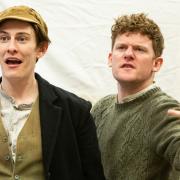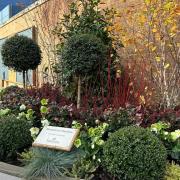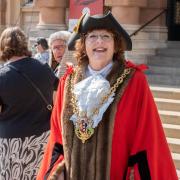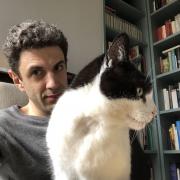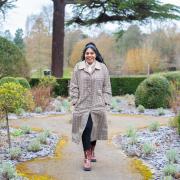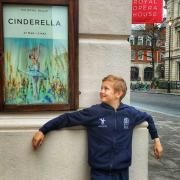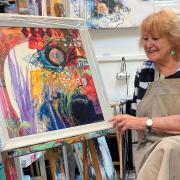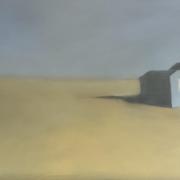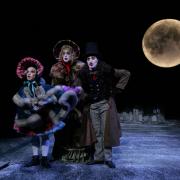Sarah Doig uncovers the life and times of Basil Brown, the man who revealed the Sutton Hoo treasures

In the summer of 1951, visitors from across the country flocked to the Festival of Britain exhibition on London’s South Bank. It was a showcase of Britain at its best – new inventions, scientific discoveries and artistic excellence.
One of the centrepieces of the archaeology display was the Sutton Hoo treasure with its now iconic Anglo-Saxon masked helmet. The unearthing of the burial ship and treasure on high ground above the River Deben in Suffolk had been one of the most significant archaeological discoveries of the 20th century.

And yet the Suffolk man who had originally excavated the burial ship did not even get a mention on the festival’s display boards.
An inquiring mind
Basil John Wait Brown was born in January 1888, the only child of a Suffolk farmer. Basil’s parents moved from Bucklesham to Rickinghall when he was only a few months old, where his father had taken on a small tenancy at Church Farm.

Basil attended the nearby village school where, as in all rural schools at the turn of the century, teachers taught large classes of pupils of mixed ability and ages. In later life, Basil Brown admitted to a local schoolboy (who was doing a school project on the then famous archaeologist) that he disliked history at school, not least because he wanted to prove his teacher wrong at every opportunity.
Basil clearly had an enquiring mind and from the age of five he studied astronomical books and charts that had belonged to his grandfather. His school lessons were supplemented by a private tutor which nurtured his enquiring mind. If the young Basil Brown could not be found studying the night sky with his telescope, he was digging in a local field to see what he could find.

On leaving Rickinghall School at the age of 12, Basil joined his father on the farm, keeping the tenancy of the farm after his father’s death. But Basil Brown was never a natural farmer and could not make an adequate living. He and his wife, May, who he had married in 1923, moved briefly to the nearby school house. It was here that he completed his Astronomical Atlases, Maps and Charts: An Historical and General Guide, which was published in 1932 and brought Basil Brown recognition in astronomical circles.
Digging up the past

It was during the 1930s that Basil’s love and talent for archaeology flourished. He was doing odd job work, such as gardening, to earn a living and excavating local sites in his spare time. Basil became interested in ancient alignments and used this knowledge to uncover remains of lost buildings at eight moated medieval sites, including one at Burgate.
Working with the Ipswich Museum and the Suffolk Institute of Archaeology, Brown undertook excavations to locate Roman industrial potteries at Wattisfield. This included the site of the Henry Watson Potteries, which was first established as a family firm in the early 1800s and is still trading.

Basil also embarked on a dig at Stanton Chair which revealed a Roman villa. Such ad hoc work for Ipswich Museum transformed Basil from a self-taught, amateur archaeologist into a professional one, albeit a casual, self-employed one. And it was mainly due to his irregular employment pattern that he was free to be hired to work on a project that was to make his name.
In the late 1930s, Mrs Edith Pretty, owner of Sutton Hoo House, asked Ipswich Museum to recommend an archaeologist to excavate some mounds on her estate. They suggested Basil Brown who, in the summer of 1938, was employed directly by Mrs Pretty to investigate the mounds. During the two-month dig, Basil excavated three mounds which he found had all, at one time, contained important burials, but had been disturbed or plundered at some earlier stage, probably during the Tudor era.

The following May Basil resumed excavations at Sutton Hoo, working on the largest of the mounds. His only dig assistants were Mrs Pretty’s gamekeeper and her gardener.
He lodged with her chauffeur in Woodbridge, cycling the vast distance back home to his wife in their house in The Street, Rickinghall every other weekend. It was only a matter of days into the 1939 dig that some promising finds were made which resulted in the uncovering of the now-famous burial ship. But it was not long after that the authorities and national experts became involved in this momentous find.

An archaeologist from the Ministry of Works took control of the project and Basil Brown was side-lined. However, at Mrs Pretty’s insistence, Basil continued to work on the site, although he was never allowed into the burial chamber itself. The treasure was found in July and the finds packed and sent to London.
With the outbreak of the Second World War at the beginning of September, Basil Brown was left at Sutton Hoo to cover over the excavated ship, after which he returned to his home in Rickinghall.
Throughout the war, when he had several civilian defence roles, and for most of the rest of his life, Basil continued excavations on numerous local sites. He continued to work sporadically for Ipswich Museum, but many of his digs were in his spare time and for the sheer delight of uncovering and confirming his theories about what lay beneath the surface.
His notebooks, which are now kept by the Suffolk County Council Archaeological Service, reveal meticulously kept records of all his work. These include photographs, and crayon plans and drawings.
One such record is of the excavations Brown undertook at Rickinghall Superior Church in 1952 which revealed the existence of a Lady Chapel which had long-since disappeared. He also uncovered what he believed to be a Norman font which now stands outside the porch at Rickinghall Inferior church.
The last dig
Basil Brown’s final dig was at Broom Hills in Rickinghall, which was excavated over a four-year period starting in 1964. Evidence was found at the site of Neolithic and Roman occupation and it was verified as the site of a Saxon nobleman’s house. It was during the Broom Hills excavation that he suffered either a stroke or a heart attack, which ended his days of active archaeology.
On the Broom Hills project, as with all other local digs, Basil Brown encouraged residents, old and young, to help. Therefore, a whole generation of 1950s and 60s schoolchildren in Rickinghall and the surrounding villages have fond memories of helping Basil. They helped with the initial digging as well as being given small trowels and brushes to scrape gently at the earth to uncover the finds. Basil’s mentoring of the children did not end there. He would explain to them the significance of fragments of pots they had unearthed and how changes in the soil colour gave vital clues on what had been there.
Basil died in 1977. His memory and legacy lives on in his home village where people talk of a kindly man with a worsted suit, tie and cap, smoking a pipe, and, in old age, with a whistling hearing aid and chattering false teeth. He is fondly remembered by many Suffolk archaeologists, historians and residents, so much so that in 2009 a plaque was presented to Rickinghall Inferior church, where it was placed on a wall, to commemorate arguably the village’s most famous resident.




